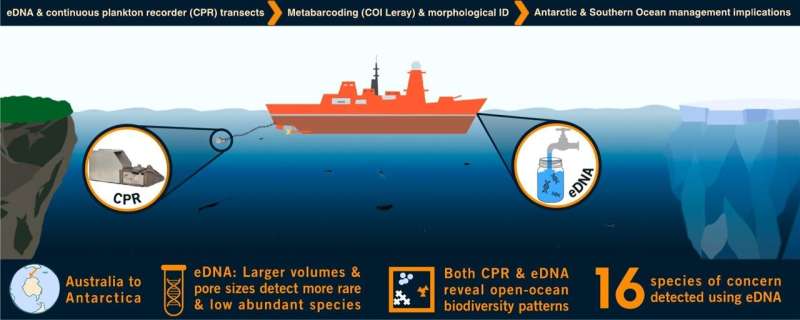Exciting new developments in DNA technology are poised to transform the way we monitor and understand the marine environment. Recent research has shown that environmental DNA (eDNA) can provide a more comprehensive and accurate picture of zooplankton diversity in the Southern Ocean than traditional methods like the Continuous Plankton Recorder (CPR). This innovative approach not only detects a wider range of species but also has the potential to identify non-native and invasive species that may threaten the delicate Antarctic ecosystem. By combining eDNA with CPR surveys and other biophysical data, scientists can gain a deeper understanding of the impacts of climate change and other environmental stressors on these fragile marine ecosystems.

Revealing the Unseen Diversity of Ocean
In 2019, Australian Antarctic Division researchers Dr Leonie Suter and Georgia Nester embarked on a 3000 nautical mile voyage from Hobart to the Davis research station to trial this new DNA-based technology.
The team analyzed the environmental DNA (eDNA) in 138 seawater samples, leading to detection of a whopping 68 different zooplankton species — almost twice the number of species they could detect with the traditional CPR method. This remarkable finding demonstrates the potential of eDNA to uncover the unseen diversity of marine life, such as delicate and gelatinous organisms that are easily damaged or fragile so easily become lost in a traditional sample.
Protecting Antarctica from Non-native Species
Another key finding to emerge from the researchers’ eDNA analysis was their detection of 16 non-native or potentially invasive species on the voyage. Most of these detections were nearer to Tasmania (where these species are expected to be present) but the team also obtained evidence for their presence in the sea ice region, likely resulting from ship hull fouling organisms being removed by abrasion with the ice.
The findings can indicate the use of eDNA for an early warning system to identify non-indigenous species introductions in the fragile Antarctic ecosystem. Dr Suter adds, “Given the potential threat posed by non-native species, future efforts should explore methods to improve the effectiveness of early detection of non-native species in Antarctica, and eDNA methods may be an appropriate approach.
Now with new biosecurity measures installed on Australia’s newest icebreaker, the RSV Nuyina allowing eDNA to be collected while at sea and collaboration with practitioners in the field continuing, the researchers are confident that eDNA will soon play an important role in protecting Antarctica from invasive species.
A new holistic way of monitoring marine ecosystems
Although the eDNA method was better at finding a greater diversity of zooplankton species, they stressed that it complemented standard CPR surveys rather than replaced them. Thanks to both methods, as Dr Suter puts it: “by using these two approaches in combination we can get a more complete picture of overall diversity and the changes occurring within it, including patterns that would be missed with just one approach”.
Integrating the best from eDNA and CPR methodologies can provide a better knowledge of Southern Ocean ecosystems in response to climate change and other environmental drivers. The work will also allow biophysical data to be incorporated into a more comprehensive picture of these environments, which will support the development of management or conservation strategies that are better equipped to tackle microhabitat and broader scale processes.
The results of this research are so promising that it could be a game changer in protecting our oceans and more generally in terms of understanding and supporting the conservation of biodiversity worldwide.
